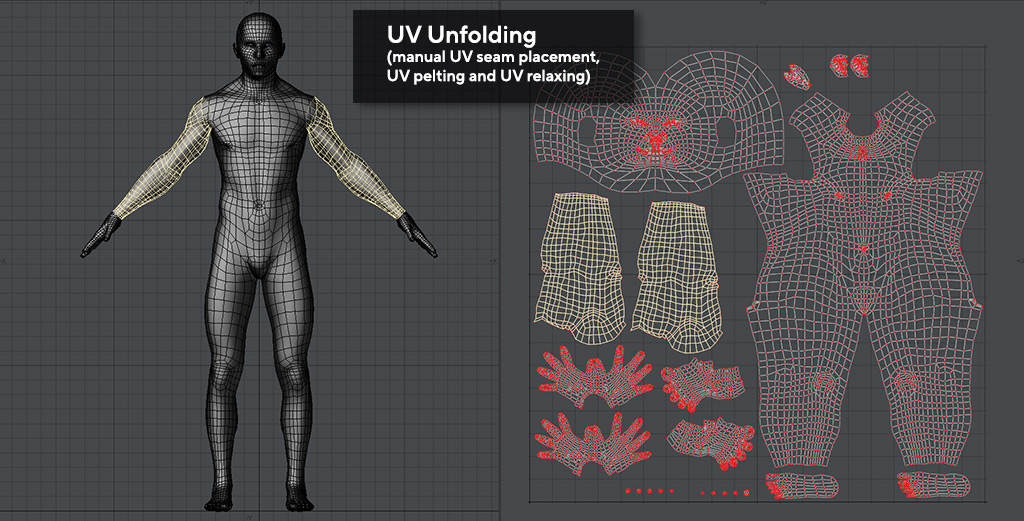Why unwrapping?
Unwrapping and Unfolding UVs
The terms “unfold” and “unwrap” in the context of UV mapping often refer to similar processes, but they can have nuanced differences depending on the software or the specific techniques used.
To accurately project any type of image or color information onto a 3D geometry, designers must first unwrap or unfold their 3D object onto a UV sheet, a process known as UV mapping. Without properly unwrapping the 3D object, the application of textures — whether images or color information — cannot be guaranteed to work correctly.
 Here’s a breakdown of the concepts:
Here’s a breakdown of the concepts:
Unfolding UVs:
Unfolding is a technique used to lay out a 3D model’s surface in a 2D space by “unfolding” the geometry, similar to unfolding a paper model.
The goal is to minimize distortion and stretch, ensuring that textures applied to the 2D UV map will look correct on the 3D model.
Usage: Typically used in scenarios where the surface of the model needs to be laid out as flat as possible, with attention to maintaining proportions and minimizing stretching. This is often used for organic models like characters.

Unwrapping UVs:
Unwrapping is a broader term that encompasses various methods of creating a UV map, including unfolding, but can also involve other techniques such as planar mapping, cylindrical mapping, and more.
 The primary objective is to create a UV layout that allows textures to be applied accurately to the 3D model. The focus can be on different aspects, such as minimizing seams, optimizing texture space, or reducing distortion.
The primary objective is to create a UV layout that allows textures to be applied accurately to the 3D model. The focus can be on different aspects, such as minimizing seams, optimizing texture space, or reducing distortion.
Usage: Used for a wide range of models, from simple objects to complex structures. The method chosen for unwrapping can depend on the shape of the object and the desired outcome.
TL;DR:
Unfold: Specifically refers to a method of flattening a 3D surface into 2D space by “unfolding” it, with a focus on minimizing distortion.
Unwrap: A general term that includes various techniques for creating UV maps, including unfolding, and aims to produce a usable UV layout for texturing.
In practice, the terms are often used interchangeably, but understanding the specific techniques and goals associated with each can help in choosing the right approach for UV mapping your models.